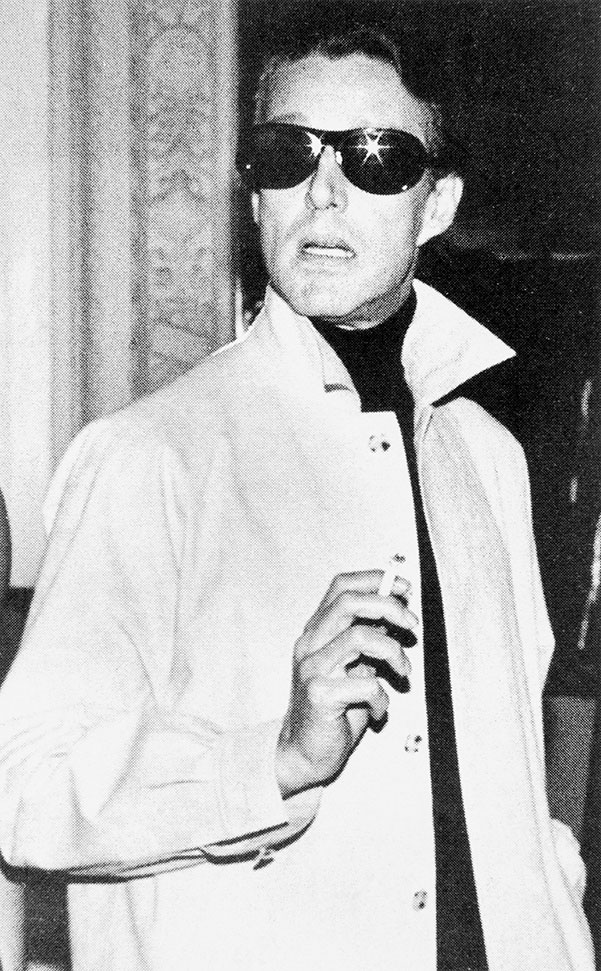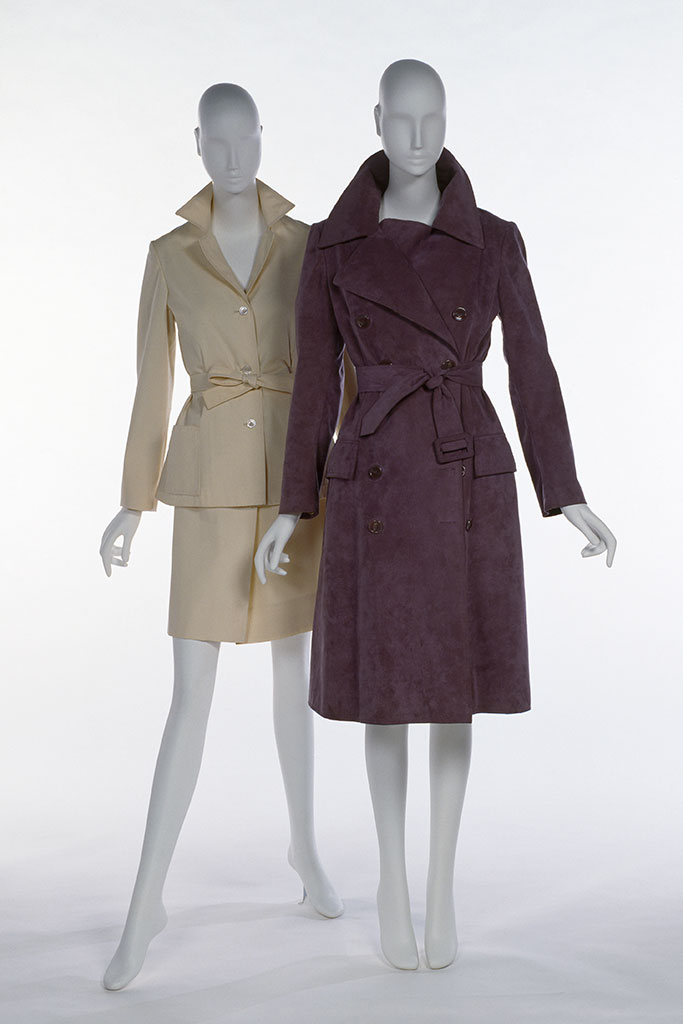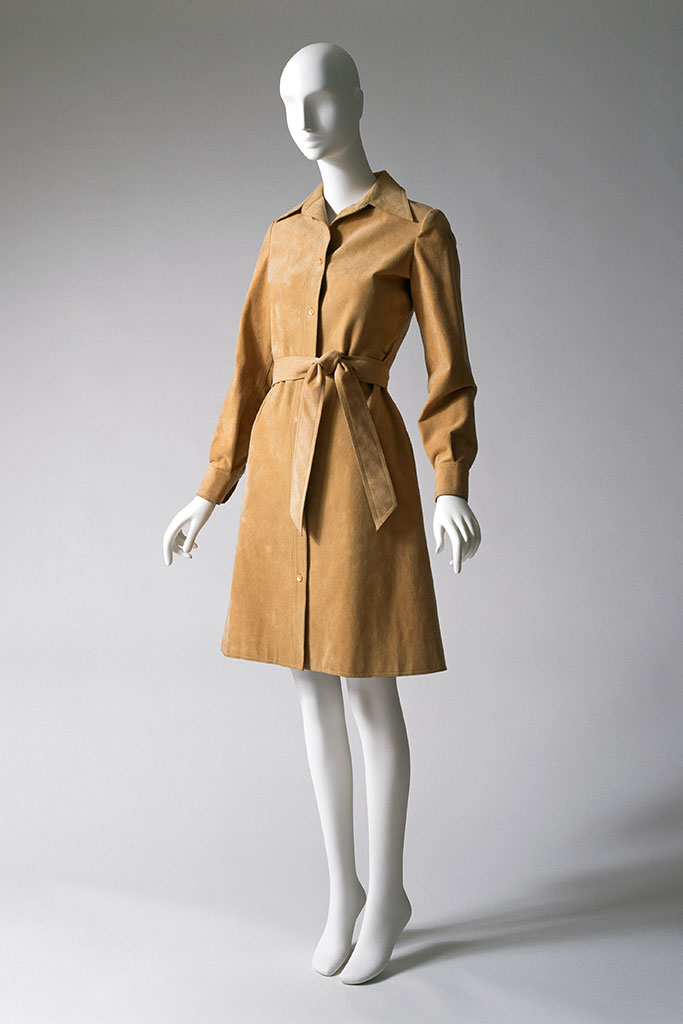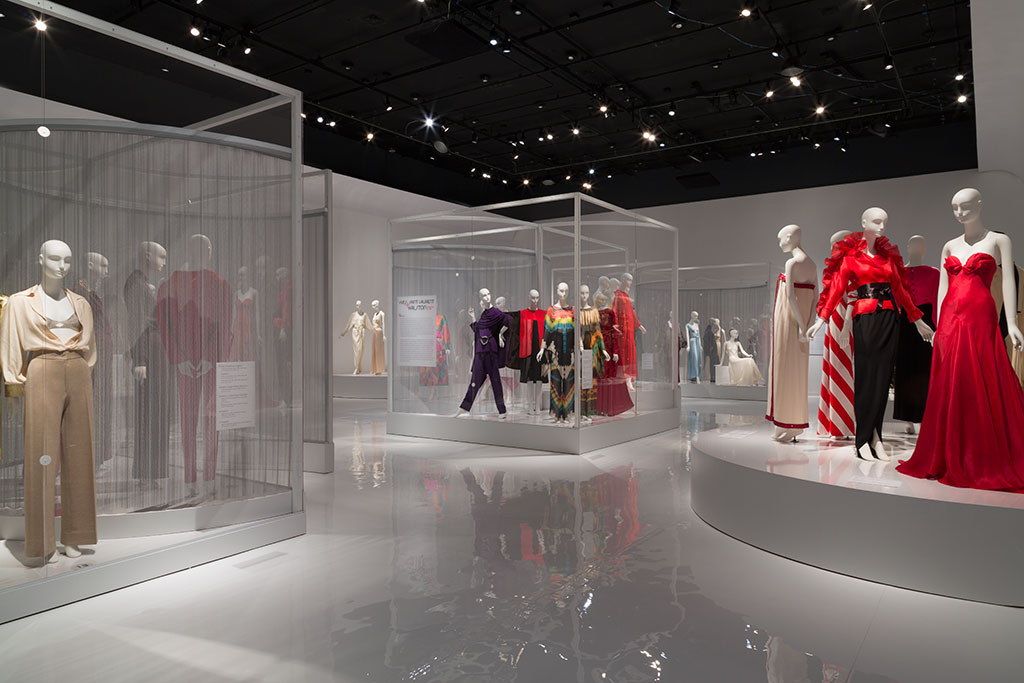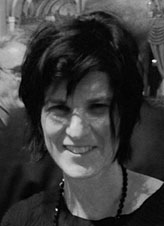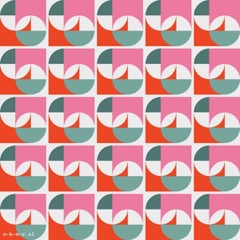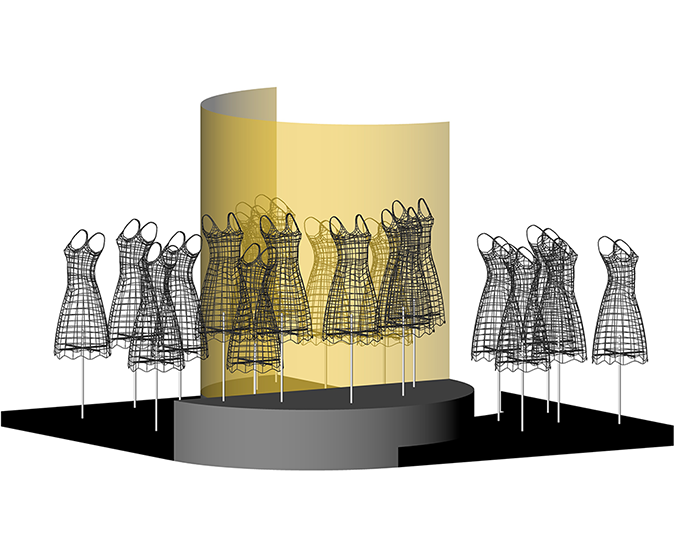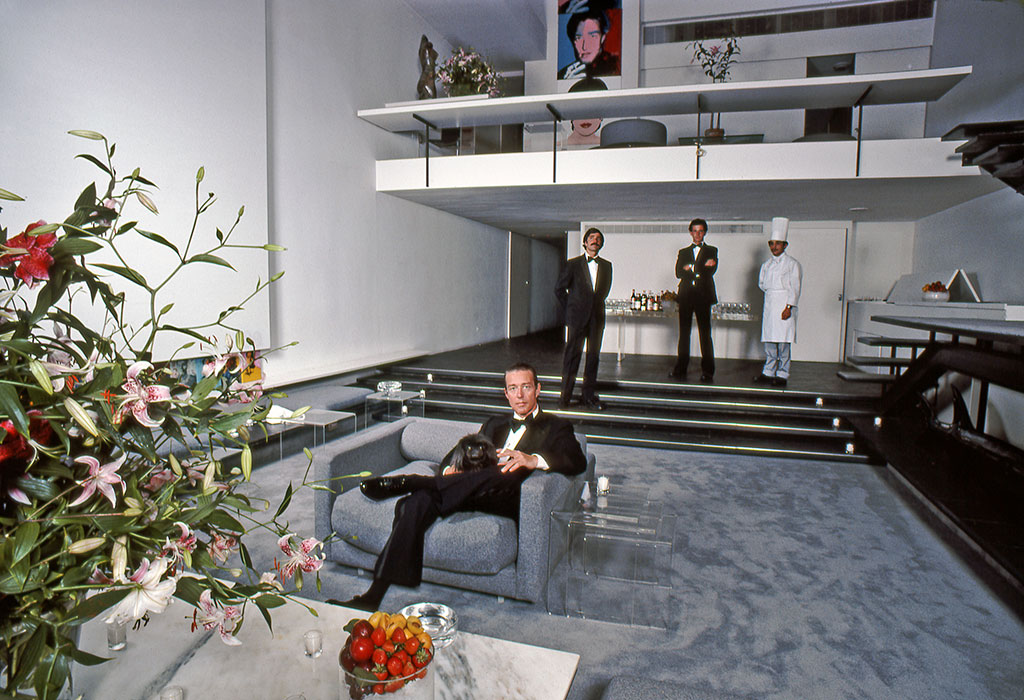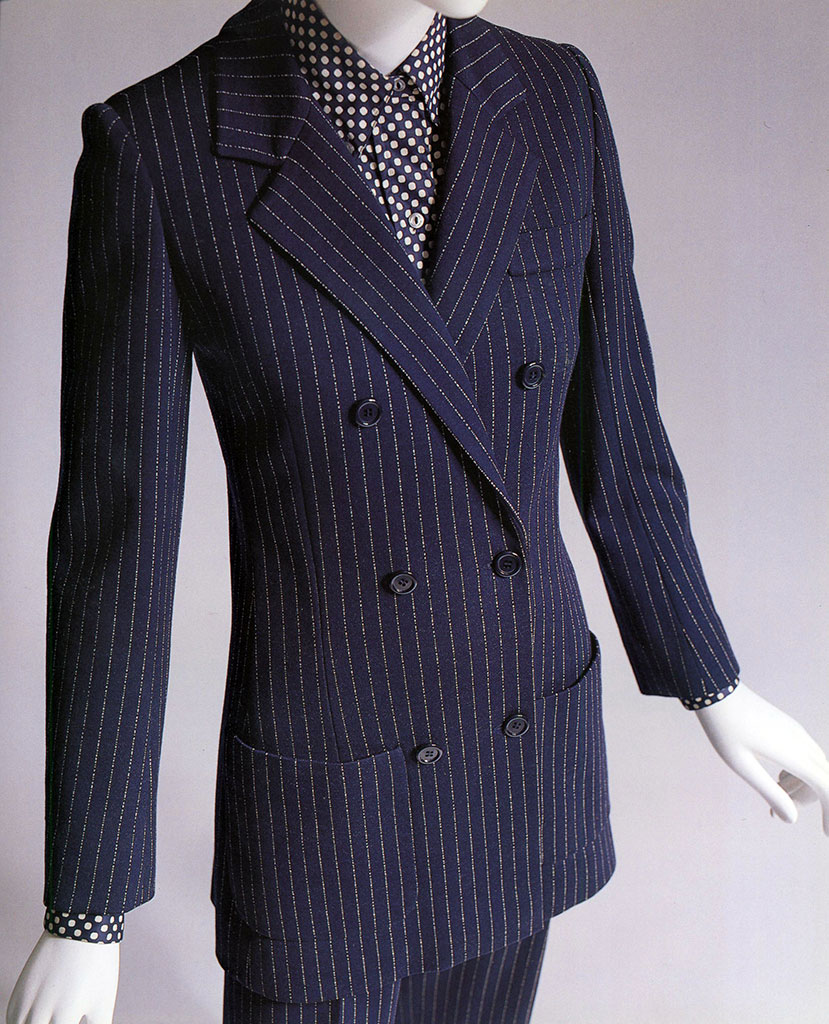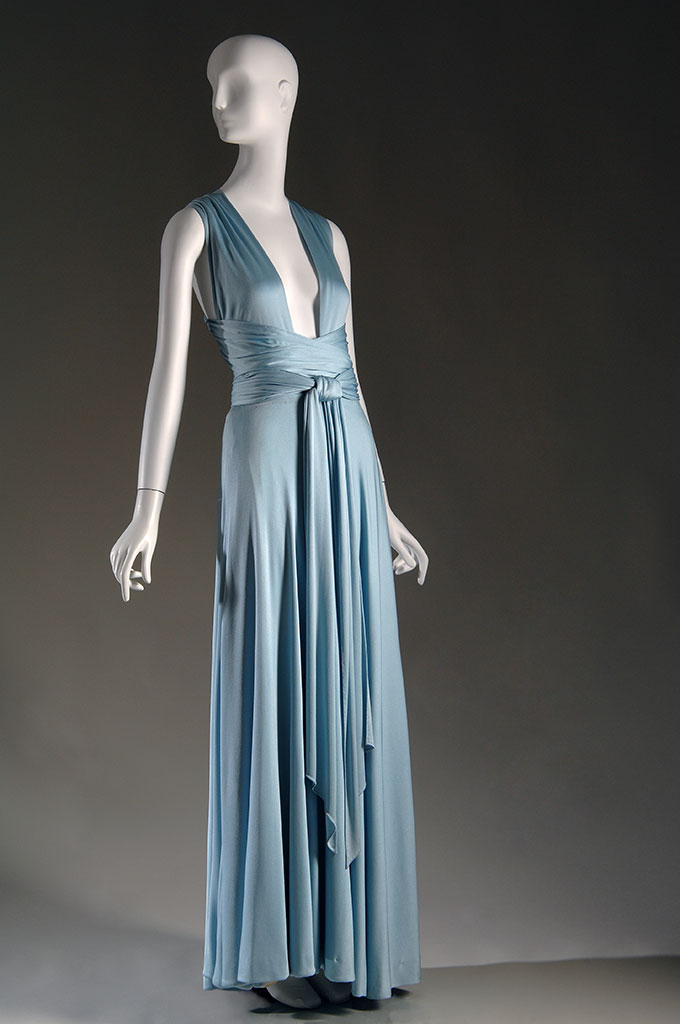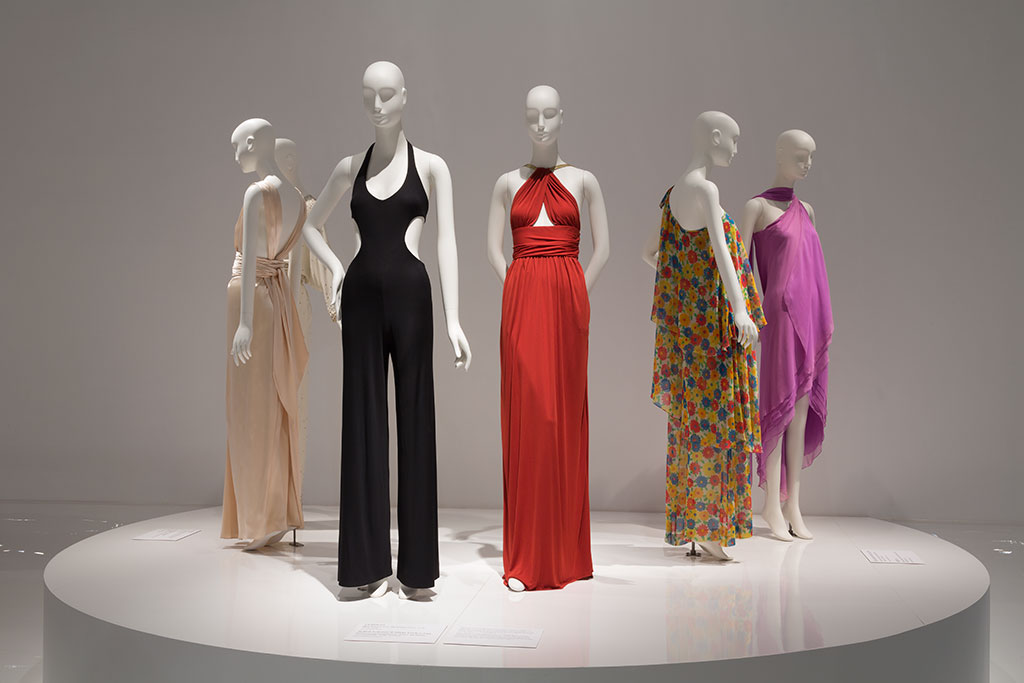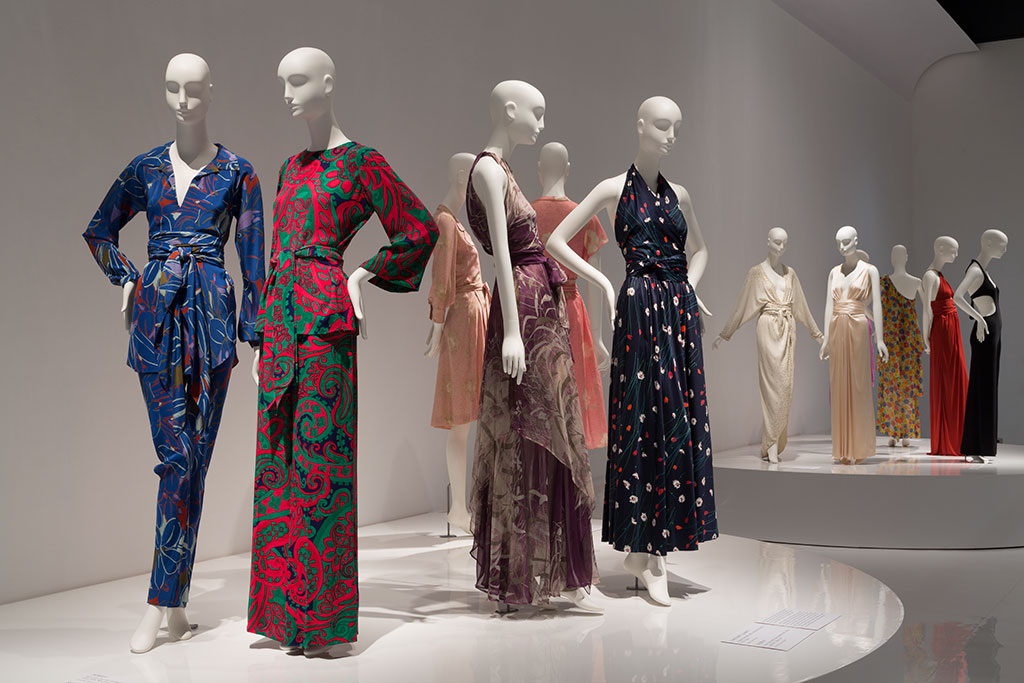
Installation, Yves Saint Laurent + Halston: Fashioning the 70s. Exhibition design, Kimberly Ackert, 2015. Photographer: Eileen Costa © MFIT
Welcome to the exhibition blog for Yves Saint Laurent + Halston: Fashioning the 70s! Each week we’ll be posting interviews, special insights from our curators, and more. Stay tuned…

– In your essay “History of a Collection” in the book Yves Saint Laurent + Halston: Fashioning the 70s, you wrote that your interest in Halston began in the early 1970s. What was Halston’s allure for you at that time?
FD: Living in Boston in the 1970s (not the most fashionable city in the country), the single-named designer Halston started to surface in the fashion press. On frequent trips home to NYC, shopping Fifth Ave between 57th Street—starting at Bergdorf’s—and heading down to 39th—ending at Lord & Taylor—I saw that the Halston pieces at Bergdorf’s had this new, clean, fresh look. The simple shapes and “unfussy” construction started to resonate with me. These clothes were easy.
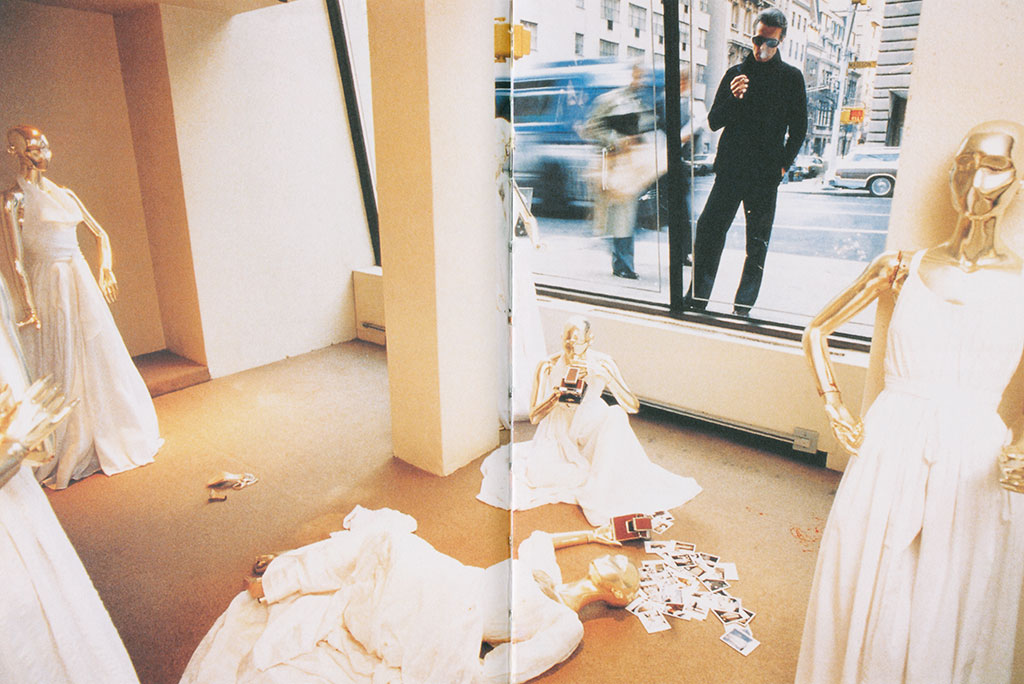
Halston looking through the window of the Madison Avenue boutique in New York at the display by Victor Hugo, 1976. Photograph: Malan Studio
– You worked on the first major Halston retrospective, Halston: Absolute Modernism, with the late Richard Martin (on view at MFIT from October 1991 – January 1992). What was your experience like working on that exhibition? Are there any special stories about Richard Martin and/or the show that you would like to share?
FD: I had just started working at the museum full time. To say working with Richard on the Halston exhibition was life-changing would be an understatement. Little did I know that working with Richard and Harold (Koda), on that exhibition would be the beginning of what I can only call my apprenticeship. Some 25 years, and over one hundred sixteen exhibitions later, I find that what I learned then still holds true today: a good exhibition starts with a good idea, a great thesis, and visually exciting objects to support the thesis. In terms of organizing an exhibition, one of most important things I learned was to see the relationship between objects as they were laid out in the exhibit space and to always look at the negative spaces between the groupings. As for Halston, I learned about “process”—that each season does not have to be a completely new theme—ideas and designs can be revisited, re-worked, and built upon. I would recognize this process later in the work of the late Geoffery Beene, and in more recent years, the work of Isabel Toledo.
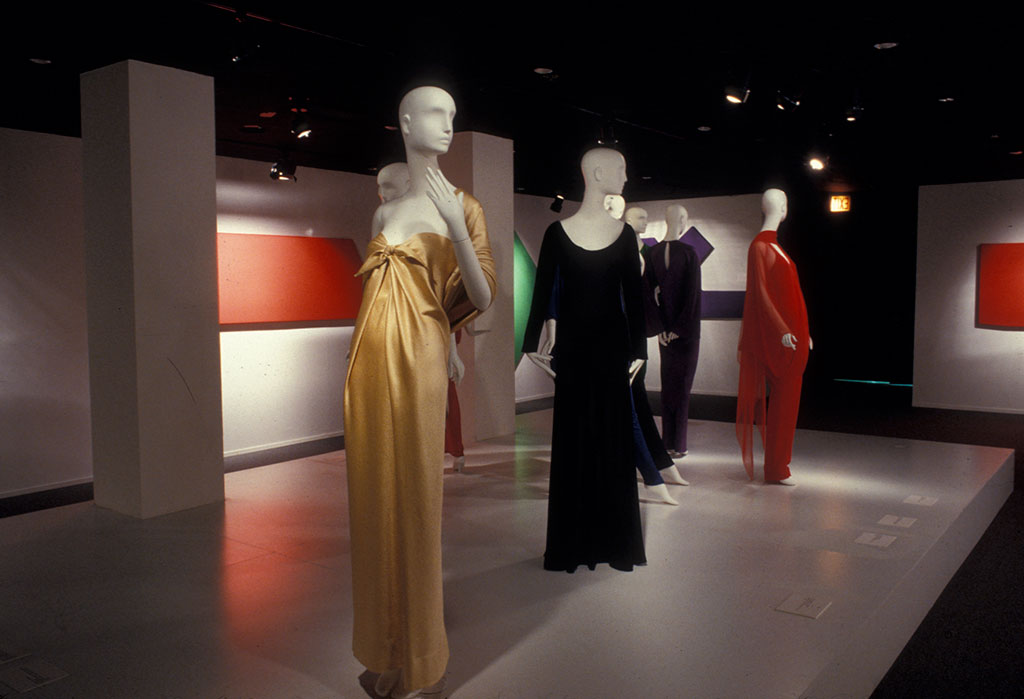
Installation, Halston: Absolute Modernism, 1991. Photographer: Irving Solero. © MFIT
– Has your perspective on Halston changed at all since that time?
FD: Oh, yes! Halston was a larger-than-life celebrity, known for late nights at Studio 54 and tales of wild escapades. Yet the more I looked at Halston’s pieces, patterns, and support materials both here at MFIT and in other collections, the public persona receded into the background. Not completely—the lifestyle and the people surrounding Halston had certainly contributed to his design vocabulary. But by looking at his body of work, I really began to see what a good designer, what an innovator, he really was. If my perception of Halston, and fashion itself, had not changed over the last 25 years, I would be remiss in my work as a curator. Coming from a background in theater and fashion, I thought Halston was clever, innovative, and a good craftsman. Now, all these years later, I realize just how prolific and intelligent a designer he was—and how he, and YSL, were part of a shift in the fashion industry, whereby a fashion house could become a multi-million dollar business.

(left) Halston evening dress, brown silk jersey, 1972, USA, 76.118.3, Gift of Lauren Bacall.
(right) Halston evening dress, blue silk jersey, 1972, 76.69.17, Gift of Lauren Bacall. © MFIT
– The Halston Archives at MFIT are the most comprehensive collection of records of his work in the world. Are there any highlights from the archive you’d like to share with the public?
FD: For me, seeing the hundreds—no, thousands—of original sketches in Halston’s own hand was breathtaking. I am still in awe whenever I look at them…there are the actual first working (design) patterns with notes from Halston to his head tailor, including which model it should be made for, along with color and fabric swatches! The complete process, from design sketch to runway photos, can be seen—from illustrator Joe Eula’s watercolors, to photos of fittings in the workroom, to line drawings for the show. These show the final design choices and in what order the models will walk the runway. And finally, the runway photos of the show. A guilty pleasure for me, but one that adds to the whole story and history of Halston, is seeing notes from his clients—who were usually his friends as well—describing how much they loved his clothes and where and to what function they wore them to. And okay, we do have the fitting sheets, so I now know who was what size at any given time during the 1970s.
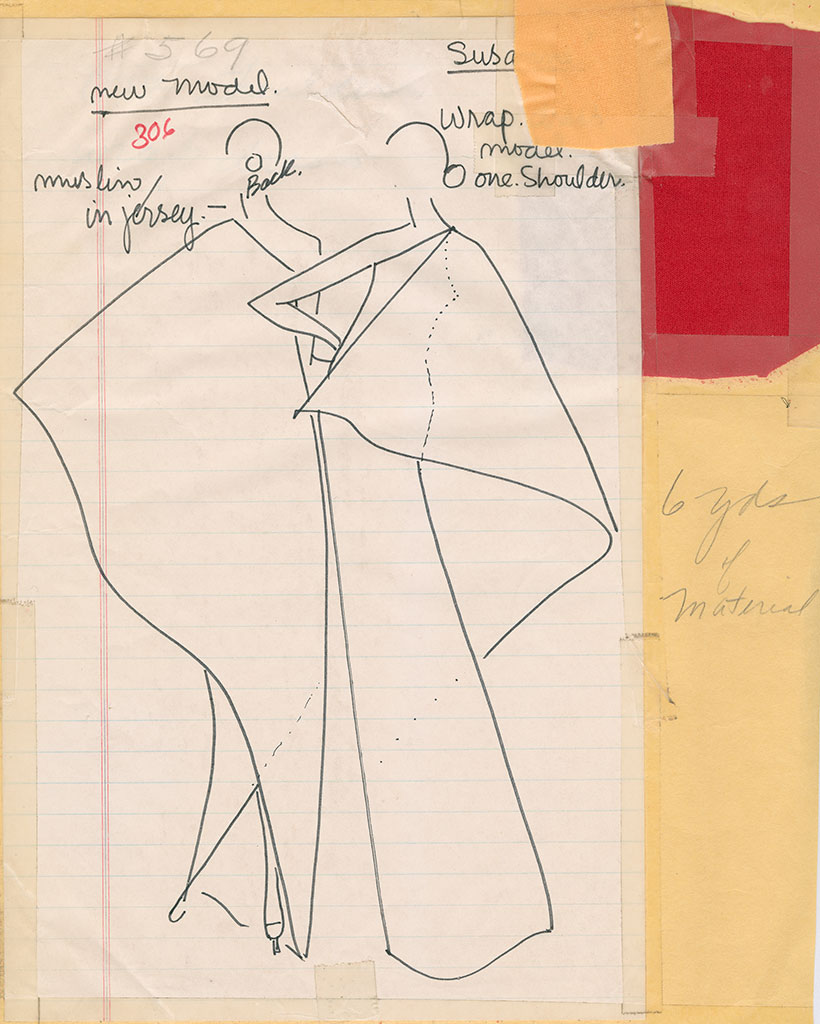
Halston, sketch, undated, The Halston Archives at The Museum at FIT © MFIT
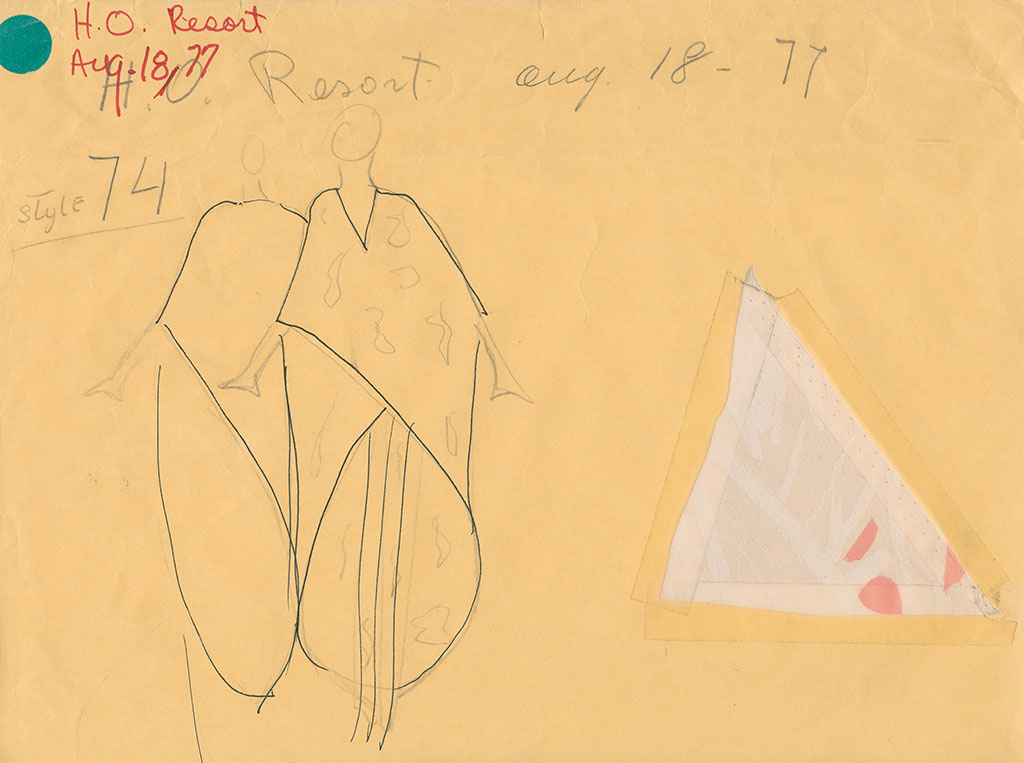
Halston, sketch, 1977, The Halston Archives at The Museum at FIT © MFIT
– MFIT’s collection of Yves Saint Laurent and Halston is comprised of gifts from prominent donors, including Lisa Kirk’s donation of Halston and Marina Schiano’s donations of YSL haute couture and Rive Gauche. Can you elaborate on what makes these donations particularly important to MFIT’s collection?
FD: The Halston donation by the husband of the late Lisa Kirk, Mr. Robert Wells, is the single largest donation of Halston pieces to the museum—well over 100 ensembles. The donation also includes a number of very important Charles James ball gowns that Ms. Kirk, a Broadway star in the 1950s, wore on-stage and off. This donation shows the fierce loyalty and continuity of Halston’s clients. Marina Schiano’s donation of YSL pieces to the museum, while few in number, are important in that she was a model, muse, and close friend of the designer. In addition, Schiano became YSL’s New York representative for his boutiques and therefore was most likely wearing what was being purchased by the American Saint Laurent client.
– You also incorporated Halston’s work into A Queer History of Fashion and other MFIT exhibitions. With all your experience working with Halston’s designs, what is it, in your opinion, that makes him a great American designer?
His ease and simplicity, and the intelligence of his design sensibility. He understood the lifestyle of the active American woman. While there were many influences on Halston’s work: for example, 1930s bias-cut dresses, especially those of Mme. Gres, the simple shapes of ethnic dress—the sarong, tee-shaped tunics, capes, and ponchos—it was, I think, the influence of Claire McCardell’s work in the 1940s & 50s that made him a great designer of American style. McCardell truly understood the emerging post-WWII American woman. She simplified shapes, pared down construction, and eliminated complicated closures. McCardell also looked to ethnic dress for simple geometric shapes and basic sewing constructs that resulted in an easy and fast way of dressing, and allowed freedom for the active American woman on-the-go. The fact that you can see Halston’s influence in the design vocabulary of today’s most innovative designers, like Ralph Rucci—who worked for Halston—and Isabel Toledo—whose design roots clearly echo Halstonian methodology—only attest to his place in American design history.
– Are there any behind-the-scenes stories you’d like to share from working on YSL+Halston and/or Halston: Absolute Modernism?
Only that I had great for respect for Patricia Mears and Emma McClendon, the exhibition’s co-curators, and it was fun working with them on this project. And the discovery that Halston and Yves Saint Laurent’s design lexicons crossed paths more often than they diverged.

Joe Eula, illustration of Elsa Peretti, Loulou de la Falaise, Pat Ast, and Berry and Marisa Berenson, undated, The Halston Archives at The Museum at FIT. © MFIT
Stay tuned for more insights from MFIT curators, and be sure to tweet us with #YSLhalston. Love this interview? Share it on social media with the links below.
-MM
